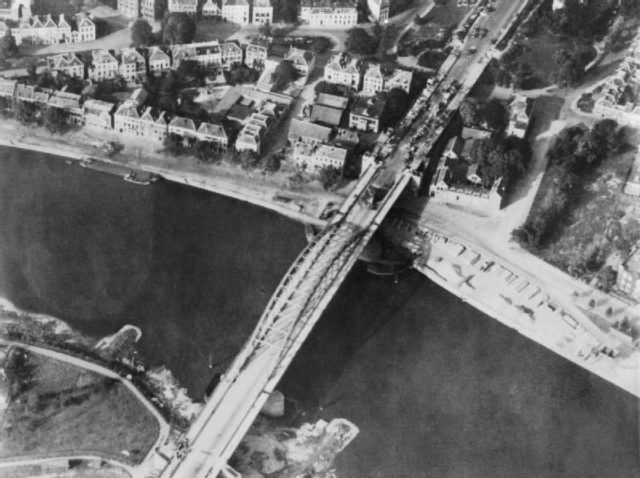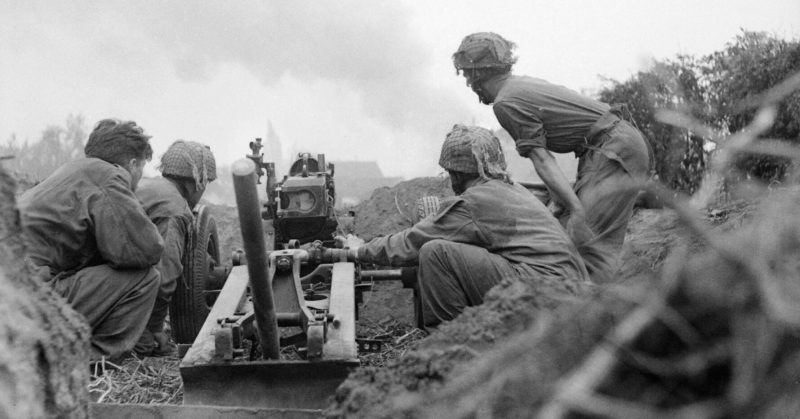72 years after they were killed at the Battle of Arnhem during World War II, six soldiers have been located.
They were killed while trying to defend against the Germans during the failed Operation Market Garden, a mission depicted in the film A Bridge Too Far.
Thousands of Allied paratroopers landed in Holland, which was occupied by Germany in September 1944. They waited eight days for reinforcements that never came.
The six men were infantry soldiers that arrived in Arnhem on gliders. Their mission was to securing landing sites for supply drops and then holding part of Oosterbeek, a village along the Rhine River.

In a span of four days the six soldiers from the Border Regiment, Lance Corporal Raymond Halliday, Corporal Jack Carr, Corporal Thomas Edgar, Private Thomas Stanley, Private Harry Vasey and Private George Wilson, were all killed in battle.
They were buried in unmarked graves, some by the British and others by the Germans after they retook the area.
Their names are on the list of servicemen with no known burial site at the Grossbeek Memorial in Holland.
Dutch historians who work to identify unmarked war graves felt that they had found the six men last year. They use exhumation reports from 1945 to find them.
According to the reports, after Arnhem was liberated, the bodies were exhumed and buried at the military cemetery at Oosterbeek.
They presented their findings to the Ministry of Defence’s Joint Casualty and Compassionate Centre which researched the British archives before confirming the identification of all six men.
While most of the 9,000 men who fought at Arnhem on September 18, 1944 were paratroopers, there were three battalions of infantrymen from the Border Regiment who flew in on gliders.
The families of the six men will attend a dedication ceremony in Holland. For the first time, they will be able to lay wreaths on headstones with the names of their family members on them.
Joanne Pritchard is Halliday’s granddaughter. Halliday died when her father, also named Raymond, was only two years old. She recalls that, even though her father didn’t really know his father, he was always proud to say he had fought and died in the war. She said it was an honor to finally be able to stand before her grandfather’s grave and pay her respects. Her daughters and nephew have received permission to leave school for the ceremony.
Prithchard’s father searched in Holland for his father’s grave in the 1970s, but never found it.
About 1174 men were killed and 6000 captured during the battle.
Stuart Eastwood is the curator of Cumbria’s Museum of Military Life for the former Border Regiment. He said it was “wonderful” that the six men have been found and that their family members know where they have been laid to rest after decades of wondering.
Wilson, 22, was the first of the six men killed on September 21. Three days later Edgar was shot and taken to the “Angel of Arnhem,” Kate Ter Horst, who cared for 250 injured men. Edgar later died from his wounds. On the same day, Edgar was shot, Halliday was shot and killed in a trench.
The Royal Netherlands Army’s Recovery and Identification team worked with the reports from 1945 to locate the six men. The JCCC confirmed their findings this year. In the case of Halliday, they were able to use dental records to positively identify him, Mail Online reported.
The objective at Arnhem had been to seize the Arnhem Bridge which crossed the Rhine into Germany and gain control of parts of the town. The paratroopers and infantrymen were to receive support from the XXX Corps tank division. The tanks never made it; the Arnhem Bridge was “A Bridge Too Far.” The troops lasted eight days until food and ammunition ran out.
